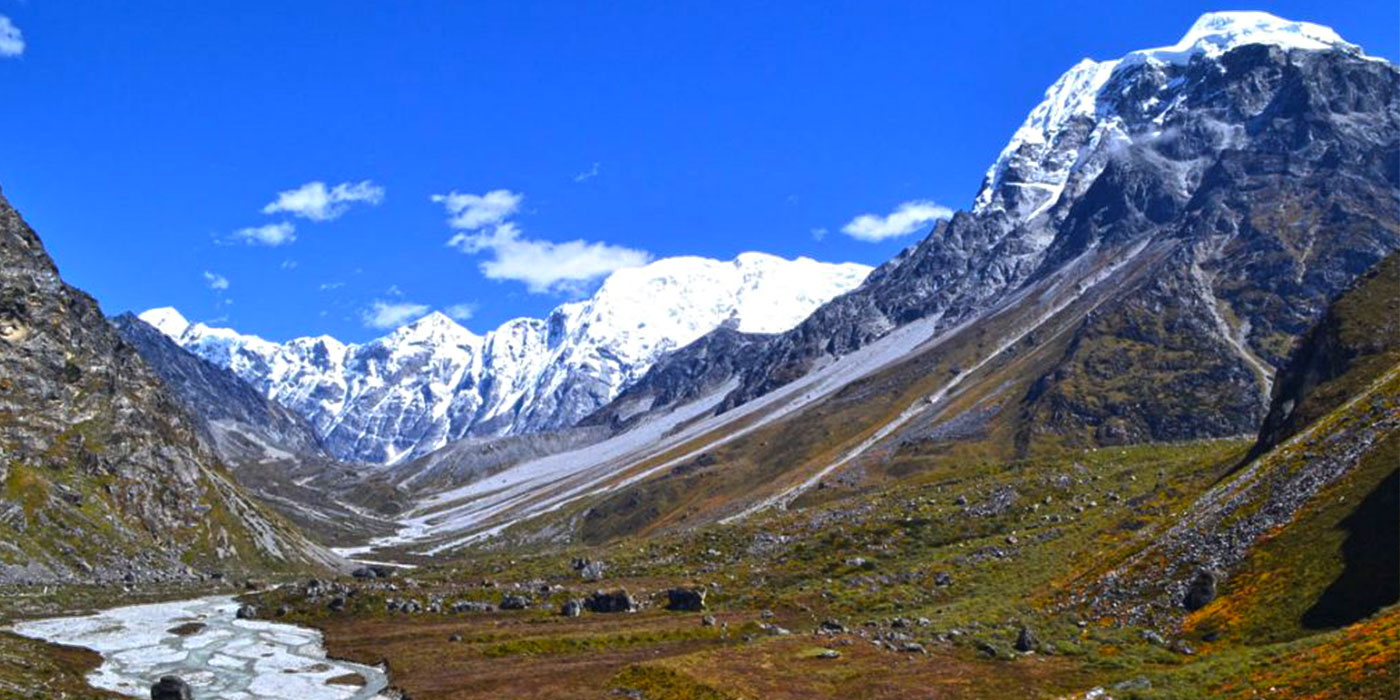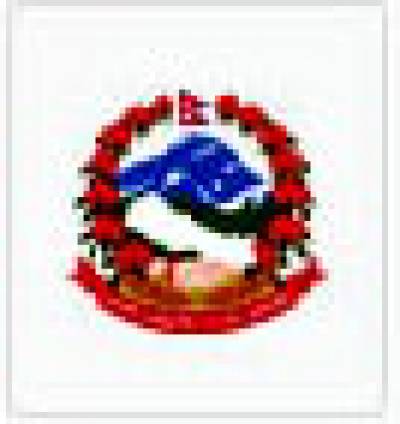LANGTANG VALLEY TREK 8 DAYS
Langtang National Park is a land of unspoiled beauty, becoming Nepal’s first Himalayan national park in 1976. It is also home to the Tibetan Buddhist Tamang people and is a stone’s throw from Kathmandu which reduces travel time to reach this spectacular region of Nepal. Its spectacular mountain views and the hospitality of the Tamang villagers have made this one of the most popular trekking destinations in Nepal. Many homes, businesses, and villages were destroyed after the 2015 earthquake and abruptly ended their source of income. The resilience and determination of these people have now rebuilt their economy with tourists returning to this stunningly beautiful region.
The Langtang National Park is comprised of 25% forest, from subtropical to alpine and includes deciduous oak and maple, pine, and rhododendron (in full bloom in spring). On this trek you will see various native animals, such as the Himalayan black bear, Himalayan Tahr, Assam macaque and red pandas. Despite the rumor that this is the home of the legendary Yeti, you should not hold your breath and expect it to jump out of the bushes!
One of the many highlights of this trek is the sacred Hindu Gosainkunda lakes area where many pilgrims visit in August each year. This area is also significant to Buddhists who visit this famous monastery - Kyanjin Gompa. The trek begins at Syabru Besi Village and crosses high alpine pastures where Yaks graze and through dense forests and on to Kyanjin Gompa. A trek up to Kyanjin RI (peak), offers an out of this world 360-degree view of the Himalayan Mountains before heading down through the valley where we will be transported back to Kathmandu. Rhododendron and bamboo forests, raging waterfalls and awesome snow-clad peaks are just some of the features on this trek. Trekking in this picturesque valley will leave you in awe and cause you to admire the resilience of these hardy Tamang mountain people whose daily existence is to be admired in such rugged terrain. Fewer tourists ensure your experience will be more relaxing and peaceful.
ITINERARY
Day 1 : Drive to Syabru (1400m ) Duration: 6-7 hours.
After leaving Kathmandu we have a seven-hour journey by road heading to the Langtang Valley. The road climbs out of Kathmandu Valley at which point you will have some fantastic views of the Annapurna Mountains, Manaslu, Ganesh Himal, and other peaks in the Langtang region. Our first destination is Trishuli Village from where we continue climbing until we reach Dhunche and enter then enter the Langtang National Park. Leaving Dhunche we drive for another hour downhill until we reach Syabru Besi where we stay the night.
Day 2 : Trek to Lama Hotel (2,470m) Duration: 5-6 hours.
Today we follow the trail and cross the Bhote Kosi (meaning Tibet River) which flows from Tibet. We then climb through the sub-tropical forest and join the trail coming from Syabru Besi before heading down through oak and rhododendron forests. On the trail it is more than likely we will encounter Langur monkeys frolicking in the treetops. We continue up a steep incline before reaching the Lama Hotel where we stay the night.
Day 3 : Trek to Langtang Village (3,500m) Duration: 5-6 hours.
We will climb through forest on the first leg of today’s trek and will have occasional views of Langtang Lirung from between the trees. At Ghora Tabela (3,000m) we emerge from the forest and come to a Nepali army outpost. We continue and pass through several small settlements occupied by herders who come here to graze their livestock, including Yak, in these mountain pastures in summer. Not too much further we come to Langtang Village, which has mostly been rebuilt in a more modern style of architecture. There are still reminders here of the devastation from the 2015 earthquake.
Day 4 : Trek to Kyanjin Gompa (3,800m) Duration: 4-5 hours.
From Mundu, the trail climbs gradually through yak pastures as the valley opens out further and the views become more extensive. After crossing several small streams and moraines, the trail reaches the settlement at Kyanjin. Here there is a small monastery and a government-operated cheese factory, which is a good place to stock up for lunch and afternoon snacks. As you will arrive by lunchtime there is time to take it easy in the afternoon or explore the area. If you are feeling energetic, head up the Valley towards Langshisha Kharka to see some of the amazing views.
Day 5 : Hike to Tsergo Ri (5,033m) - Duration: 6-7 Hours.
On Day 5, you will begin your ascent to Tsergo Ri, a challenging yet rewarding hike that reaches an altitude of 5,033 meters. The trek takes approximately 6-7 hours, depending on your pace, and involves a steep climb through alpine meadows and rocky terrain. As you gain altitude, the trail provides stunning panoramic views of Langtang Lirung, Dorje Lakpa, and the surrounding peaks. Tsergo Ri offers one of the best vantage points in the Langtang region, with awe-inspiring views of the Langtang Valley below. Once at the top, take time to enjoy the breathtaking scenery, snap some photos, and soak in the beauty of the Himalayan landscape. Afterward, you’ll begin your descent back to your teahouse in the Langtang Valley, where you’ll spend the night. The altitude and the long trek make it important to stay hydrated and pace yourself during this demanding day.
Day 6 : Hike to Kyanjin Ri (4,773m) & Return to Lama Hotel - Duration: 7-8 Hours.
Day 6 starts with a steep ascent to Kyanjin Ri, located at 4,773 meters. This hike is a bit more moderate compared to Tsergo Ri, but still presents a good challenge. The trek to Kyanjin Ri, which takes around 3-4 hours, rewards you with panoramic views of Langtang Lirung, Langtang II, and other surrounding peaks. From the viewpoint, you can take in stunning vistas of the Langtang Valley and the surrounding Himalayan range. After spending some time soaking in the views, you’ll begin your descent back to Kyanjin Gompa for a brief rest and then continue your journey downhill towards Lama Hotel. The entire trek for the day, including the return to Lama Hotel, will take approximately 7-8 hours. The descent can be tough on the knees, so it’s important to maintain steady footing. After a long day of trekking, you’ll rest in Lama Hotel, ready to continue your journey the following day.
Day 7 : Trek to Syabru Besi (1,470m) Duration: 5-6 hours.
Today we retrace our footsteps to Syabru Besi, enjoying the peaceful forested hills. If you are feeling energetic then we can take the more impressive route from Rimche via Sherpa Gaon to Syabru Besi; it will take much longer to reach the ultimate destination, but it’s a worthy detour.
Day 8 : Drive back to Kathmandu (1,350m) Duration: 6-7 hours.
Today we are on the road back to Kathmandu on a windy and picturesque journey with views of green hills and gorges. You will be transferred to the hotel where you can either enjoy the leisure time and relax or catch up in visiting some sights in Kathmandu Valley or do some last-minute shopping.
SERVICES
Cost Includes
- Three meals a day (Breakfast, lunch, and dinner) during the trek.
- Kathmandu to Syabrubesi and back to Kathmandu transportation by Local Bus
- Fresh fruit every evening after dinner.
- Trekking Lodge (Tea House) accommodation during the trek.
- All necessary paperwork including Langtang National Park Entry Permit & Tims card fees.
- A highly experienced, helpful, knowledgeable, friendly, English speaking well trained, Government license holder guide with all his salary, food, drinks, accommodation, transport and insurance.
- Strong, helpful Sherpa porters with proper safety equipment and walking equipment, his salary, food, accommodation, and insurance (one porter for two people).
- Comprehensive medical supplies (first aid kit will be available).
- Arrangement of emergency helicopter service (paid by your Travel Insurance Company).
- Use of sleeping bag, down jacket, duffel bag and walking poles (if you don’t have your own, to be returned after trip completed).
- Sherpa Expedition and Trekking T-shirt
- Government taxes and official expenses.
- Trip achievement certificate after successful trip completion.
- Oxygen meter to check your pulse and oxygen saturation and heart rate twice daily (Very useful to check Altitude Mountain Sickness(AMS) symptoms) which will ensure your health during the trek.
- Assistant guide for groups of 8 or more people.
Costs Exclude
- Meals whilst you are in Kathmandu - lunch, and dinner.
- Hotel accommodation in Kathmandu
- Nepal entry visa fee (easy to obtain the visa on arrival at Tribhuvan International Airport – Kathmandu). $30 USD for 15-day, $50 USD for 30 Days, and $125 USD for 90 Days visa.
- Personal travel and medical insurance.
- International airfare.
- Your personal expenses.
- All the alcoholic and nonalcoholic, soup, tea, coffee, hot chocolate, cocoa, mineral water, extra food, cold and hot drinks on trek ( i.e. those you choose to purchase along the way and during evenings in the tea houses)
- All desserts & sweet things like chocolate, cake, pie, pudding.
- Hot shower and battery charging at the tea houses.
- Tips for the guide, porter, and driver (tipping is expected)
- NOTE: If you return earlier from the trek due to sickness or any problem, the money you paid for the flight, hotel, mountain room, food, etc. is nonrefundable, and you will need to bear the expenses for the hotel, food, etc. in Kathmandu yourself.
EQUIPMENTS
The following information will give you some idea about what you need to bring for the trek. It is important you do not forget the essential items, as this will determine your comfort and safety on the trek. Equally important is that you do not burden yourself with unnecessary equipment on the trek.
General
- All season sleeping bag and down Jacket (we can provide if you need it, but has to be returned after the trek)
- Duffle bag ( Sherpa Expedition & Trekking provide duffle bag during the trek but has to be returned after the trek)
- A wind and waterproof thin layered jacket (a must-have for morning and evenings above 3,000m)
- Daypack
Upper Body- Head / Ears / Eyewear
- A pair of half gloves
- A warmer hat that covers the ears
- Sunglasses
- Neckwarmer
- Sunscreen (35 to 60 SPF)
- Headlamp and an extra set of batteries
Hands
- A pair of half gloves for walking poles(if you prefer)
- Warmer shell gloves and liner
Upper Body
- long sleeve t-shirts
- Thermal tops
- wool jacket or pullover
- Sports bras for women and girls
- Water and windproof shell jacket
Lower Body
- Thermal underwear (especially trousers)
- windproof and waterproof trousers
- warmer trousers
- Comfortable trekking pants
- Extra casual sport pants
Footwear
- A pair of good waterproof trekking boots
- Pair of sandals
- 4-5 pairs of woolen socks
- Sock liners
- Light shoes and sneakers
- First Aid Kits and Medicines
- Assorted adhesive bandages (fabric preferred)
- Blister treatment cream or similar
- Insect / anti-itch ointment
- Ibuprofen or other pain-relief medication
- Diamox (125mg to 250mg tablets for altitude sickness)
- Warps, splints, and wound coverings butterfly bandage
- Water purifying pills
(Note our company guide will carry the medicines and first aid kits during the trek. However, we recommend you bring your personal first-aid kit as well)
Miscellaneous - but must useful on the trek
- 4 passport size photos with original passport
- Water bottle & filter
- Flight details (please make a copy and leave one pic at our office in KTM because in case you want to change your flight date)
- Bathroom kit (conform, should be included toilet paper, plastic bags, hand wipes, towel, and soap, etc.)
Extra things
- Comfortable trekking poles
- Quality energy dry foods (up to you)
- Power bank and music players
- Camera (memory card, chargers, and extra batteries)
GOOD TO KNOW
Accommodation
You will be accommodated in 3-star hotels in Kathmandu. During the trek, we will be staying at lodges/ teahouses. You may find comfortable and better quality teahouses - having attached bathroom at lower levels- until you reach higher elevations, where the accommodation is more basic with bare necessities.
Meals during the trek
In Kathmandu, your hotel includes breakfast, whereas all meals (breakfast, lunch, and dinner) will be provided during the trek. A staple food of the Langtang regions is potatoes, oats, buckwheat, Sherpa stew, and Tibetan bread. Sherpa’s’ started farming potatoes when the first seeds were introduced to the region in the early 90s. There is a limited choice of food at higher elevations and except many potato dishes. Potatoes are high in carbohydrates – an excellent source of energy needed at high altitudes.
Transportation
We use a private car for sightseeing and for the airport to hotel pick and drop off. We use public transportation or local buses during the trek.
Physical fitness
This can be an easy trek where you often have to walk 5-6 hours a day. You don’t need past experience of hiking or trekking but if you have done any kind of trekking activities then it is always a plus! We have met people from all walks of life, shapes, and sizes who have completed the trek. The only difficult part is when altitude sickness strikes and the effect that it can have on your body. Before leaving for Nepal it is good if you can prepare yourself physically by increasing your stamina and oxygen intake.
Remember – The better prepared – the more enjoyable your trek!
MAP
PHOTOS/Videos
Departures
Select a departure month
Fill out the form below and a Travel Expert will reach out to create your perfect tour.
FAQS
What is the Langtang Valley Trek?
The Langtang Valley Trek is a popular trekking route in Nepal that takes you through the breathtaking Langtang Valley. It offers stunning mountain views, diverse landscapes, and a glimpse into the unique Tamang culture.
How long does the trek take?
The Langtang Valley Trek typically takes around 7 to 10 days to complete, depending on the specific itinerary and the pace of the trekker. This duration includes acclimatization days and allows for a more enjoyable and safe trekking experience.
Is it a difficult trek?
The Langtang Valley Trek is considered a moderate trek in terms of difficulty. It involves some steep ascents and descents, but the trails are well-defined and do not require technical climbing skills. However, a good level of physical fitness is recommended.
When is the best time to do the trek?
The best time to do the Langtang Valley Trek is during the spring (March to May) and autumn (September to November) seasons. These months offer stable weather, clear skies, and favorable trekking conditions.
Are there any permits required?
Yes, for the Langtang Valley Trek, you need to obtain a Langtang National Park entry permit. This permit can be obtained in Kathmandu or at the park entrance in Dhunche or Syabrubesi.
What are the highlights of the trek?
The highlights of the Langtang Valley Trek include stunning views of Langtang Lirung and other snow-capped peaks, exploring the picturesque Langtang Valley, visiting the ancient Kyanjin Gompa monastery, and experiencing the warm hospitality of the Tamang people.
Are tea houses available along the trekking route?
Yes, there are tea houses available along the Langtang Valley Trek route. These provide basic accommodation and meals, making it convenient for trekkers. However, the facilities may be more limited compared to popular trekking regions.
Is a guide necessary for the trek?
While it is not mandatory to have a guide for the Langtang Valley Trek, it is highly recommended, especially for those with limited trekking experience. A guide can provide valuable assistance with navigation, cultural insights, and ensure your safety.
How can I reach the starting point of the trek?
The starting point of the Langtang Valley Trek is usually Syabrubesi, which can be reached by a bus or private vehicle from Kathmandu. The journey takes around 7 to 8 hours.
What should I pack for the trek?
It is recommended to pack essential items such as sturdy trekking boots, warm clothing layers, a sleeping bag, a backpack, a hat, sunglasses, sunscreen, a water bottle, and basic medical supplies. It is also advisable to carry some cash as ATMs may not be available along the trek.
Latest Traveller’s Reviews
Travel experiences of our clients who recently returned from their trips.
100%
Based On 12 Reviews
Kamala Gebino
United States
December 13, 2023
Breath-taking mountain vistas
The Langtang Valley Trek offers breath-taking mountain vistas at every turn. The panoramic views of Langtang Lirung, Ganesh Himal, and other peaks are truly awe-inspiring. The trek allows you to immerse yourself in the beauty of the Himalayas and witness nature's grandeur up close.
Grażyna Kubisz
Australia
December 6, 2023
A truly memorable experience
The Langtang Valley Trek is a truly memorable experience that will stay with you long after the trek is over. The stunning landscapes, warm hospitality of the locals, and the sense of accomplishment upon reaching Kyanjin Gompa make it a trek worth undertaking. It's an adventure that will leave you with cherished memories for a lifetime.
Darcy Darcy
New Zealand
November 16, 2023
Cultural immersion
One of the highlights of the Langtang Valley Trek is the opportunity for cultural immersion. The trek takes you through charming Tamang villages, where you can interact with the locals and learn about their unique traditions and way of life. It's a chance to gain a deeper understanding of the region's rich cultural heritage.
People Considering This Package Right Now Check availability






















